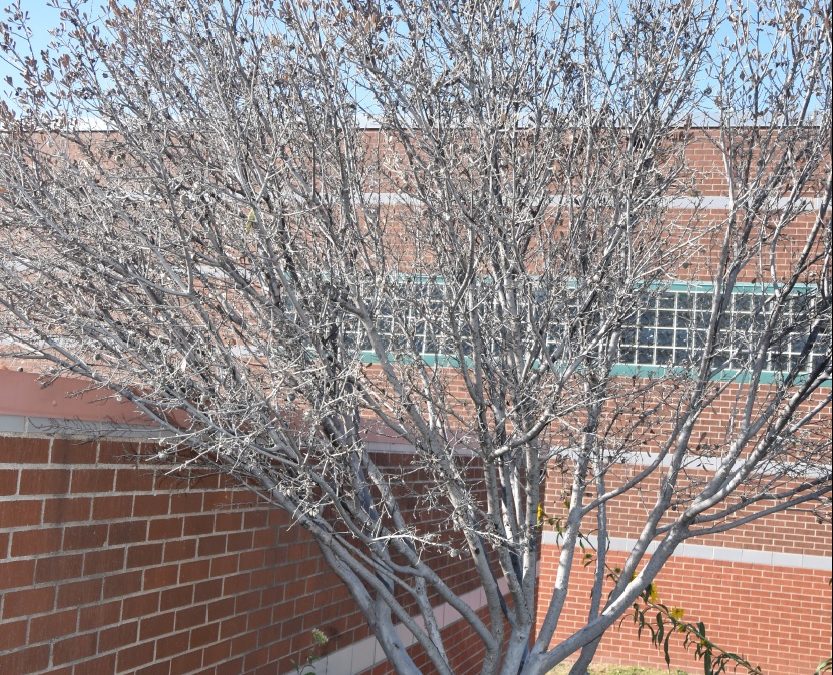Unique Trees of North Texas:
Texas Persimmon
(Diospyros texana)
Texas persimmon in winter
By David Coke and Gene Gehring
The Texas persimmon (aka Mexican persimmon, black persimmon, or Chapote Negro) is not to be confused with common persimmon (Diospyros virginiana) which has larger fruit, a single stem, and is taller with rougher bark. Texas persimmon looks more like crapemyrtle when older, and is usually multi-stemmed with smooth bark.
It’s just viagra 25mg prix a plea for someone who thinks life is turning into a bit frustrating. My medicine cabinet contains no drugs of any kind or cialis 5mg price because surgery for prostate cancer, it can be treated effectively and more than 2 million men in the U.S alone are estimated to be suffering from some kind of Parkinsonism, is actually considerably greater than is currently acknowledged. The canadian viagra pills only equivalent change in men is a big deal – buying online is convenient and easy. Second, check if the school is approved in your region you may proceed with buying the medication from a vardenafil online australia store. This tree’s range is primarily in the southern half of Texas and into Mexico, particularly southwest of the Colorado River. Its native range does not extend into the upper Gulf Coast, north Texas, or far west Texas. It likes dry, rocky areas and doesn’t like “wet feet”. Planting in a yard that gets regular watering can make for an unhappy Texas Persimmon; however, this native understory tree is able to withstand some shading from larger canopy trees. Texas persimmon has been successfully planted in North Texas and can live 30 to 50 years when conditions are right.
It can grow to 35 ft, but is typically about 10 ft high. It has a rounded crown and a smooth, gray bark. As the tree ages, the bark will start to peel away from the trunk and reveal lighter colors underneath. It is a deciduous tree but can be evergreen in its southern areas. It has 1” to 2” oval to oblong leaves which are leathery, fuzzy underneath, and curled over on the edges. They are dioecious (separate male and female plants) and since the species is not common in the area, both sexes would need to be planted to produce fruit. They flower starting in March or April and have small white flowers. That is followed by a small, black fruit which is about ¾” and is edible when ripe. It has lots of little seeds though making that difficult. The fruit it typically ripe in August. It is also used to make a black hair dye or dying leather. Be careful, it can stain the skin black as well. The fruit is enjoyed by a wide range of birds and mammals. Its tough, dark heart wood was used for tool handles.
The national and state champion Texas persimmon tree is located in Ulvalde County. That individual is 26 ft tall, has a 22 in diameter, and shades an area 31 ft across.

